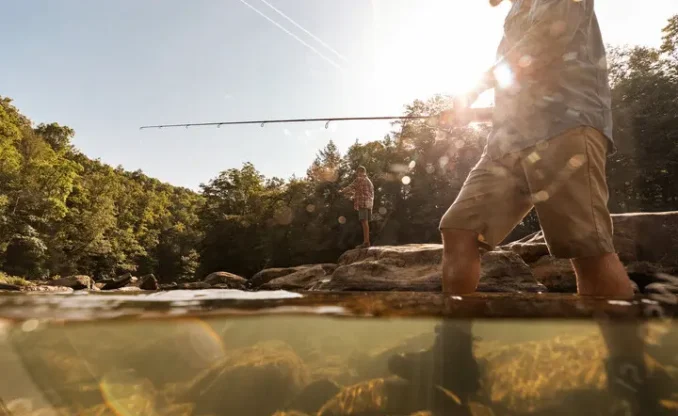While the kids are home, we’d like to help keep them entertained and learning. So, here’s a few fun activities for you and your kids can enjoy together.
Animal Track ID
Coyotes and bobcats have similar tracks that show a paw pad and four toes. Bobcat tracks are smaller, but another way to tell the difference is to look at the toes. Can you see claw marks? If you can, the tracks may be from a dog or coyote. Bobcats can retract their claws just like house cats, so you can’t see the claw marks in their tracks.
Which other animal tracks can you identify in this quiz? Look for clues to determine first whether it’s a bird or mammal.
Click below to download our Animal Track ID Quiz.
Word Scramble
West Virginia’s streams and lakes are teeming with a wide variety of fish. Cast a line and you might reel in a record-setting bass or catfish. You can also fish in trout-stocked waters in many state parks, forests and wildlife management areas.
See if you can unscramble these fishing words, and while you’re at it, make plans to go fishing soon!
Click below to download our Word Scramble.
Fish Maze
Can you wind your way through the body of a brook trout? This fish is found in streams and lakes throughout the state. You’ll recognize it from its distinctive colors and pattern: greenish brown with red and yellow spots and a pink belly.
The brook trout is West Virginia’s official state fish. What other official animals can you name? Take a quiz on how well you know our state animals!
Click below to download our Fish Maze.
Wildlife Word Search
Have you ever seen a black bear or an American bald eagle in the wild? You’ll find these animals and more in our word search!
Bears tend to stay in the woods where there aren’t many people. You can tell a bear has been in the area by the scat (“poop”) it leaves behind. Bear scat is globular or tubular shaped and may contain bits of fruit, seeds or animal hair. Black bears are omnivores, meaning they eat both plants and animals.
Bald eagles can often be found near bodies of water. They cruise over lakes and rivers and pluck fish to carry back to the nest to feed their babies. Did you know that an eagle’s nest is about 5 feet in diameter? That’s big enough for a kid to lie down in!
Want to see an eagle’s nest up close? The FWS National Conservation Training Center in Shepherdstown has a live webcam set up where you can watch an eagle pair caring for their young.
Click below to download our Word Search.








